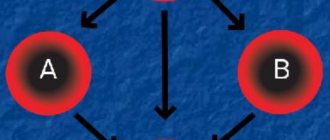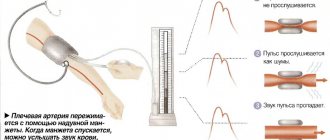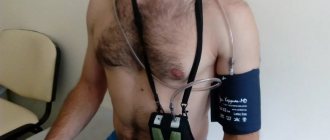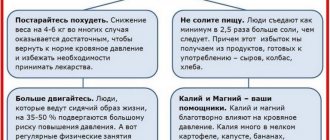- devices measuring eye pressure
- non-contact blood pressure monitors
- contact tonometers
- pneumatic VOP devices
- stationary or portable meters?
Intraocular pressure is a separate parameter that characterizes the force of pressure of the fluid contained inside the eyeball on the walls of the organ.
Intraocular pressure must be measured for people over 40 years of age, even if they have no obvious complaints about this. The need for regular checking of intraocular pressure is caused by the fact that due to its excess, serious pathologies of the organs of vision can develop. The most dangerous disease associated with IOP disorders is glaucoma. In later stages, it can lead to complete loss of visual function. In addition, eye tonometry is performed to monitor the prescribed treatment and monitor the dynamics of recovery after surgery.
Ophthalmotonus - why is it so important?
A change in ophthalmotonus should be considered an alarming symptom that indicates pathological processes in the functioning of the visual organs.
Increased intraocular pressure is a consequence of disturbances in the outflow of fluid that is located under the membrane of the eye. Circulation becomes impossible due to the presence of plugs in the tubules that drain fluid. Moisture gradually accumulates, which leads to increased pressure on the shell.
High pressure inside the eye causes pressure on the fundus vessels. As a result, the retina is injured and the photosensitive elements die. Compression of the optic nerve is also observed, which threatens to disrupt the delivery of oxygen and nutrients to cells. If this happens over a long period of time, the tissues of the organ atrophy, vision gradually decreases and, as a result, disappears completely.
Reduced ophthalmotonus also indicates the development of pathological processes. Low pressure leads to a deterioration in the blood supply to the organ, due to which the tissues atrophy and the eyes gradually cease to see.
Changes in ophthalmotonus may result from problems in the functioning of certain organs and systems. Thus, high intraocular pressure is often observed in people with heart and vascular diseases, and low intraocular pressure may be a concomitant sign of liver failure or the initial stages of retinal detachment.
What do I need to do before taking my blood pressure?
- Relax and rest for 3-5 minutes before measuring your blood pressure. Do not speak.
- Find a comfortable position with something to support your back.
- Place your hands on the table so that they are at heart level and sit quietly.
- Wrap a properly sized cuff around the top of your bare arm. The cuff should completely encircle your arm, but your finger should fit comfortably between it and the surface of your shoulder.
- Make sure the bottom edge of the cuff is 1 inch (2.5 cm) above your elbow.
Indications for measuring IOP pressure
Ophthalmologists measure eye pressure based on patient complaints. Key symptoms of concern include:
- changes in visual acuity;
- feeling of a film on the eyes;
- recurrent headaches that occur in the temporal region and around the eyes;
- rapid eye fatigue;
- poor vision in low light conditions;
- redness of the eyes;
- pain when concentrating on a specific object;
- painful sensations that occur during eyelid movement;
- dry eyes;
- narrowing of visual fields;
- change in the shape of the pupil.
For 40-year-old patients, eye pressure is measured without fail, regardless of whether they have complaints or not. Monitoring of ophthalmotonus in such people is performed at least once a year.
In patients with glaucoma, ophthalmotonus is measured at least once every three months. If a person has a genetic predisposition to the disease, but there are no complaints about the functioning of the visual organs, for prevention, intraocular pressure is measured at least once every two years.
Diagnostic methods
Ophthalmologists use tonometric and tonographic methods not only to diagnose glaucoma and determine an effective treatment strategy for the disease, but also to monitor the dynamics of the pathology and identify complications.
Techniques for measuring intraocular pressure vary, the main ones being:
- palpation;
- instrumental research (conducted both contact and non-contact).
Measuring ophthalmotonus by palpation
The method is one of the simplest. It is used when the patient has contraindications to the use of instrumental diagnostics, or the correctness of the information from the instrumental examination is in doubt. Most often, palpation is used when the examination is carried out on an injured cornea or after eye surgery.
During palpation, the specialist evaluates how elastic the membrane of the eye is. He draws conclusions based on the degree of deformation when exposed to ocular structures.
There are several options for conducting such a survey:
- the specialist palpates the eyeball directly during surgery after the administration of anesthesia;
- transpalepebral palpation is performed, when the doctor, with the patient’s eyelids closed, determines the hardness of the eyes by gently squeezing the area above the eye cartilage with the fingers of both hands.
Conclusions about the level of ophthalmotonus can also be drawn from the characteristics of the sclera's reaction to external influences. If the intraocular pressure is normal, but as the sclera is compressed, obvious tremors will be felt. With high IOP, the degree of pressure must be increased, and the force of the push decreases.
Diagnostics of IOP pressure using instruments
In ophthalmological practice, a wide range of contact devices is used to perform eye tonometry. Their main advantage is the provision of results with a minimum degree of error, which does not exceed 1 mm Hg. But such devices also have significant disadvantages. First of all, the risk of infection increases. Often, to conduct a study, it is necessary to first anesthetize the treatment field. The use of such devices in diagnosing children is limited, since it is difficult for children to remain still and calm during the procedure. Because of this, there is a high risk of eye injury.
One of the common ways to perform contact tonometry is using the Maklakov apparatus. The procedure is characterized by simplicity, accurate results and relatively low cost.
Non-contact measurement of intraocular pressure
Devices for non-contact changes in intraocular pressure have a simple design, so they can be used even at home. The peculiarity of the technique is that the procedure is performed without contact with the surface of the eyes, therefore, the probability of infection is zero. In this case, the patient does not experience pain or discomfort during the examination.
The non-contact device for measuring ophthalmotonus operates almost instantly. It takes a few seconds for the device to produce results. Using them, the doctor can determine the presence of risks for the development of certain ophthalmological pathologies.
The procedure for measuring intraocular pressure using a non-contact method is carried out as follows: the patient places his head on a stand, its position should be fixed, and then looks through a special window, concentrating his gaze on the white spot. At this time, the device produces a powerful stream of air and records how it affects the shape of the cornea. It is from these changes that conclusions about intraocular pressure indicators are drawn.
Despite the fact that the non-contact method of eye tonometry is considered the safest, the accuracy of the results using the Maklakov method is still higher.
Characteristics of semi-automatic tonometers
The best option for those who do not want to bother with the device is semi-automatic. You just need to pump air into the cuff, the device will do the rest. I'm pleased with the price: much less than automated models.
The advantages of the products include the following:
- there is no need to use a phonendoscope: to monitor the pulse beat in the arteries, the task of measuring blood pressure (BP) is simplified;
- It takes a few minutes to measure blood pressure;
- The warranty period is longer.
Semi-automatic devices also have some disadvantages: the readings sometimes differ from the numbers of a manual tonometer, and not everyone is comfortable pumping air on their own. This great "in-between" option helps you understand the basic rules of measuring pressure. Both adults and children can use the semi-automatic device. It is convenient to take it on trips, where monitoring with a pressure gauge is even more important than at home.
Measuring IOP at home
Patients with glaucoma in extreme stages are advised to monitor eye pressure throughout the day. To perform such measurements, special portable instruments are used. One of them is the ICare device. It helps determine the degree of ophthalmotonus by applying special replaceable sensors to the cornea of the eye.
Among the advantages of this technique are:
- minimal error in the obtained data;
- efficiency of the procedure;
- no negative consequences for the cornea;
- patient comfort during the examination;
- eliminating the risk of infection.
Since the device has a memory function and stores the results of the last 10 measurements, this increases the convenience of monitoring changes.
When is daily blood pressure monitoring prescribed?
How does blood pressure behave during the day? This question is answered by daily blood pressure monitoring.
We talked about this research method with our regular consultant, general practitioner, cardiologist at Clinic Expert Voronezh, Kalinina Angelina Anatolyevna.
— Angelina Anatolyevna, what is daily blood pressure monitoring?
Daily blood pressure monitoring is a method of functional diagnostics. Its essence is repeated measurement of blood pressure throughout the day or more using a special device.
— What information about the patient’s health can daily blood pressure monitoring give the doctor? Tell us about the indications for prescribing ABPM
This research method is quite informative, and you can rely on it when diagnosing arterial hypertension. The purpose of the study is to determine a more accurate level of pressure and/or control the degree of its reduction during treatment.
Read the material on the topic: What are the reasons for high blood pressure?
This method also allows you to determine the average pressure values during the day, night, day (which, for example, is important when it is variable), the ratio of night and day pressure as a factor that allows you to assess the risk of cardiovascular outcomes.
Indications for ABPM are:
— “white coat hypertension” (pressure is within the normal range at home, but in a medical facility during repeated visits it turns out to be elevated);
— “masked” hypertension (when blood pressure is normal at a doctor’s appointment, but increases when measured at home or anywhere else);
— significant pressure fluctuations;
— various types of hypotension (low blood pressure);
- in pregnant women, including those with suspected preeclampsia;
— significant discrepancies between blood pressure readings at the doctor’s appointment and at home;
- suspicion of hypertension at night or lack of pressure reduction during this period of the day;
— assessment of the effectiveness of the therapy.
— Are there any contraindications to daily blood pressure monitoring?
There are no absolute contraindications for the examination. With ABPM, there are rather limitations in terms of placement of the device. For example, some kind of skin pathology in the area where the cuff is installed. Due to possible allergic reactions in some people, it is recommended to apply it on a thin cotton cloth.
Read the material on the topic: When there is nowhere lower. Understanding the causes of hypotension
An obstacle to applying a cuff may be a fracture, bruise, burn or its consequences. In this case, a healthy arm is selected, or the study is carried out after recovery.
— What is a 24-hour blood pressure monitoring device and how is the ABPM procedure performed?
The device consists of a cuff (like a conventional tonometer), a device for recording the data obtained, and tubes connecting the device to the cuff.
The device is in a case secured with a belt on the patient's shoulder or belt.
ABPM IS A VERY ACCURATE AND INFORMATIVE METHOD, THEREFORE IT IS APPROPRIATE TO USE IT IN THE PROCESS OF DIAGNOSIS OF HYPERTENSION
On the appointed day, the person comes for examination. A cuff is put on his arm, the device is secured, and the person leaves.
Over the next 24 hours, the device automatically measures the person’s blood pressure at intervals specified by the program. During the day, measurements are taken every 20-30 minutes, at night - every hour.
Before starting the measurement, the device warns about this with a sound signal. In this case, the person ideally needs to stop, straighten and relax his arm, and keep it in this position until the end of the full measurement cycle (i.e., pumping and deflating air). Do not move your hand during measurement. If the device “does not like” the measurement conditions (for example, the arm is bent and/or tense), it will try to make a new measurement.
Read the material on the topic: Holter (24-hour) ECG monitoring - complete instructions for the patient
The next day the person comes to the doctor who installed the device. The latter is removed, and the resulting data is decrypted and interpreted. On their basis, a conclusion is issued.
— How does ABPM differ from independent daily blood pressure measurement at certain hours? Why is keeping a blood pressure diary not enough?
Firstly, this is a more objective method, i.e. subjectivity, the level of technical proficiency of the person measuring, and possibly not entirely correct operation of the home apparatus are excluded.
Secondly, a large number of measurements are performed during ABPM. From a purely organizational point of view, it will be very inconvenient for a person to do this.
Thirdly, measurement conditions: it is easier to obtain information using the device.
ABPM is a fairly accurate and informative method, therefore, in my opinion, it is advisable to use it in the process of diagnosing hypertension.
— Daily blood pressure monitoring requires special training?
No.
— How reliable are the results obtained during the examination?
The reliability of the results obtained with ABPM is quite high - of course, subject to the conditions of the procedure. This, of course, is the serviceability of the device, its correct operation and wearing.
— How long after 24-hour blood pressure monitoring is the report ready?
Usually within an hour.
— What can affect the reliability of the conclusions obtained during daily blood pressure monitoring?
This is, of course, the patient’s behavior: failure to follow instructions, excessive hand movements, etc.; contact with water, high humidity, temperature above +50°C.
— How should a patient behave during the study? What can and cannot be done during 24-hour blood pressure monitoring?
Avoid rooms with high humidity (bath, sauna); normal hygiene procedures are possible, but contact of the device with water or steam must be completely excluded.
During the period of diagnosis of ABPM, it is necessary to wear cotton clothing (not synthetic or woolen).
While sleeping, carefully place the device next to you, trying not to squeeze the tubes.
Avoid active physical activity and movements involving the hands.
When measuring pressure, stop, straighten your arms and wait until the measurement is completed.
Keep a diary - the more detailed, the better. Periods of sleep and wakefulness, times of eating (you can additionally note the consumption of caffeine-containing drinks) and medications, activities performed (including climbing stairs, moving indoors and outdoors), emotional experiences, and stressful situations are noted.
Read the material on the topic: Vegetative-vascular dystonia: diagnosis or fiction?
If a person does not feel very well, and the measurement was taken recently, you can manually make an extraordinary measurement by pressing a special button (check this point separately with the doctor and/or nurse who will install the device on you).
If the cuff is twisted or has slipped, you should try to fix it yourself, and if unsuccessful, call the doctor conducting the study or another contact person.
You should not stay near sources of electromagnetic radiation for a long time.
— Angelina Anatolyevna, ABPM is an independent examination that allows you to identify the causes of hypertension or hypotension, or is it not enough to undergo only this one type of diagnosis in case of pressure changes?
This is a very informative method that allows you to identify high or low blood pressure as a syndrome, but to establish a diagnosis in each specific case, mandatory and, if indicated, additional studies are performed - laboratory and instrumental.
You can find out the cost of daily blood pressure monitoring by calling the phone number listed on the contacts tab
Please note: the service is not available in all cities
— In order to undergo examination in your clinic, do you need a doctor’s prescription?
Not necessary. You can be examined without a referral.
You may also be interested in:
Coronary heart disease: diagnosis and treatment
Serious question: what happens to the heart during an angina attack?
Why is electroencephalography needed?
For reference:
Kalinina Angelina Anatolevna
In 2007 she graduated from the Voronezh State Medical Academy named after. Burdenko.
From 2007 to 2008 she completed an internship in therapy, in 2010 she underwent professional retraining in the specialty “General Medical Practice (Family Medicine)”, and in 2017 – in the specialty “Cardiology”.
From 2015 to the present, he has held the position of general practitioner at Clinic Expert Voronezh, and since 2021, he has been a cardiologist. Reception is conducted at the address: st. Pushkinskaya, 11.
Interpretation of measurement results
Normal pressure is approximately equal in both eyes. The permissible difference in measurements should be no more than 3-4 mm Hg. Art. If the difference is greater than this value, then we may be talking about the early stages of glaucoma development.
As a person gets older, intraocular pressure changes, but these changes are minor. For example, in 20-year-old patients, IOP increases with age, and after reaching 70 years, on the contrary, it decreases.
Main pressure is an important criterion for determining the overall health of the eyes. If abnormalities occur, IOP should be measured regularly to avoid complications. Today, doctors have a huge arsenal of tools and methods that allow them to perform such studies. The most widely used are non-contact tonometry methods that exclude direct contact with the eye. Since science does not stand still, methods and equipment for measuring IOP are constantly being improved, making the process even safer and the results as accurate as possible.
Characteristics of an electronic tonometer
Since the rhythm of life does not allow people to devote enough time to their own health, hypertensive patients prefer automatic devices. The name speaks for itself: the measuring device independently calibrates the blood pressure. Virtually no human participation is required. Having put the cuff on the shoulder of the person being measured, you just need to press the “start” button and wait for the result.
The pressure gauge will evaluate the parameters of blood pressure on the wall of blood vessels, and the device will display the resulting numbers on the liquid crystal screen. Ease of use is the main advantage of the model. Even a visually impaired person can take measurements: some manufacturers produce their products with voice guidance.
The disadvantages that are often cited are:
- large dimensions: the device is inconvenient to transport;
- excessive sensitivity: readings are affected by conversation, change of posture, excessively deep breathing;
- some models do not have instructions translated into Russian;
- high cost: even “budget” options are not so accessible to the average consumer;
- the need to periodically replace the batteries, otherwise the device will either “lie” or refuse to “cooperate” at all.
But despite all the above disadvantages, the automatic version of the tonometer for measuring pressure on the wrist or shoulder is the most popular and best among buyers.
Professional devices measuring eye pressure
Measuring intraocular pressure is a mandatory step in any ophthalmological examination. To accurately determine this indicator, an eye tonometer is used. The principle of operation of any of its varieties is based on measuring the level of deformation of the eyeball under the influence of a strictly dosed external factor.
Using this device, the doctor quickly, accurately and painlessly performs the studies necessary to make a diagnosis. The use of a tonometer does not create any discomfort even in patients with increased sensitivity of the cornea.
Non-contact devices for measuring IOP
The most convenient, informative and hygienic method for the patient is a non-contact examination. The directed air flow causes the cornea of the eye to bend. The change in curvature is recorded and processed by a computer program, which produces an accurate result. The method does not cause any discomfort in the patient and is completely safe, as it eliminates accidental damage to the eye or infection.
The procedure for examining the fundus using a non-contact method
- The patient sits on a chair and takes a comfortable position that allows him to remain still for some time.
- The patient's head is fixed in a certain position, the gaze must be kept at a certain point indicated by the doctor.
- The ophthalmologist asks the patient to open the eyelids as wide as possible to increase the area exposed to the air flow.
- The doctor turns on the device, and an air stream begins to flow from the nozzle opposite the eye. The device records the air pressure at which the cornea bends, as well as the degree of its deformation.
- After computer processing, the equipment shows the level of pressure inside the eye.
Characteristics of non-contact tonometers
Let's consider the most important characteristics of the device:
- Range. Popular models are single-range tonometers that perform measurements ranging from 5 mmHg. up to 50 mm Hg
- Error. A deviation of no more than 0.1 mmHg is considered acceptable.
- Trigger. Depending on the design, the meter is triggered automatically during applanation or by a signal given by the doctor. The most convenient models are those that combine both methods.
- Lighting. To reliably record corneal smoothing, the sensitivity of the optical system provided by the illumination is important. A powerful LED, white or red, is used as a light source.
- Working distance. In all tonometers, the optimal distance is 20 mm. You can move your eye a little closer to the meter, but it is not recommended to exceed the specified interval.
- Location. There are stationary, portable and manual models. Stationary ones are usually installed on a special table or mounted on the wall. Portable and hand-held devices are commonly used during home visits. In the process of measuring intraocular pressure, they are placed on a suitable surface or held in the hands.
- Print information. Modern models are often equipped with a high-speed thermal printer for instant printing of results.
- Display. Screen size is an important parameter that ensures ease of use of the device. Practice shows that if the display diagonal is less than 5 inches, reading measurement results becomes difficult.
- Product weight. A medium-sized stationary ophthalmic tonometer weighs about 18 kg. The weight of the manual model is approximately 1 kg.
Features of choosing a device for measuring pressure
An extensive range of eye tonometers allows you to make the optimal choice taking into account the working conditions of an ophthalmologist.
- Stationary ones are installed in specialized ophthalmology offices in order to properly equip the workplace of the doctor who receives patients. The device is mounted on the wall so that it is convenient to examine a patient sitting on a chair, or installed on the ophthalmologist’s desk. Such devices are characterized by high accuracy, ideal automatic centering, versatility, and a wide operating range.
- Portable meters that allow you to monitor the patient's current intraocular pressure are used primarily in ophthalmic operating rooms.
- Hand-held tonometers are indispensable in the practice of ophthalmological consultants. A small device, comparable in size to a regular ballpoint pen, allows you to measure the level of fundus pressure in any setting, including at the patient’s home. For certain diseases, patients themselves purchase such devices in order to monitor IOP fluctuations and take measures prescribed by the doctor to normalize it.
All of these categories provide measurement accuracy that is quite sufficient for diagnosing the vast majority of diseases associated with changes in pressure. Another distinctive feature of these devices is complete safety for the patient, which is ensured by the absence of direct contact with the working part of the product.
In addition to dimensions, models of ophthalmic tonometers differ in their sets of functions and capabilities, providing accuracy and speed of diagnosis. Additional options include a soft air shot. Devices equipped with this function do not cause patients the slightest discomfort during measurements. Modern devices provide the ability to connect to a computer to upload examination results to the local network of a medical institution.
The service life of a high-quality, reliable tonometer is at least five years, subject to daily active use.
Non-contact eye pressure measuring device 7CR Reichert (USA)
— operating modes: single “shot” and a series of three “shots”; — built-in printer; — data transfer via USB; — measuring range: 7 ~ 60 mm Hg. Art. (standard for tonometers ISO 8612);
Easy to use. Has maximum automatic guidance speed. The process of measuring IOP is comfortable and does not frighten the patient. There is no need for adjustment when positioning the patient. Intuitive color LCD touchscreen display. The best device in its series in terms of price-quality ratio.
How to choose the right tonometer
To find out which tonometer is best to buy for home use, you need to decide what criteria you need to pay attention to first, and what you can easily do without without compromising quality.
- Device type
As we have already found out earlier, for home use, an ordinary person who does not have the necessary skills to measure pressure with a mechanical tonometer is better off opting for automatic models.
Automatic blood pressure monitors, in turn, are divided into the usual shoulder and slightly less common wrist ones, depending on what part of the arm the measurements are taken on. Their operating principle is the same.
Experts say that wrist devices are as accurate as their shoulder-mounted “brothers”; in addition, they are compact in size and light weight, which is convenient if you need to take the device on the road.
You need to use it as follows: attach the cuff to the wrist of your left hand, bring it to the heart area and press the “Start” button. The measurement time is usually about 30 seconds.
Opinions vary regarding the ease of use of automatic wrist blood pressure monitors for older adults. The advantages of this type of device include:
— a convenient display with large numbers that are clearly visible even to people with poor eyesight;
— ease of use;
— light weight and compactness;
— the cuff is convenient to put on and take off without assistance;
- Suitable for people who have problems with limited physical activity.
With all the positive aspects, there are also disadvantages:
- do not fit the full hand;
- high price;
— various age-related deformities of the joints can interfere with the correct application of the cuff;
— injuries in the area of the wrist joint are a contraindication for the use of this type of pressure measuring devices;
- the vessels on the wrists are thinner than in the forearm and wear out faster, which can affect the accuracy of the readings.
Thus, young people can choose any type of device for themselves, but for older relatives it is better to purchase the classic version for the forearm, since it is more universal.
pixabay.com/Gadini
- Features of the user's constitution
The fullness of the hand directly determines which device to give preference to. The standard cuff size is from 22 to 35 cm, but there are options where the sleeve size is 48–56 cm, these are suitable for people who are overweight and suffer from edema. In this case, wrist blood pressure monitors are not suitable at all.
- Availability of built-in memory
A device that stores the results, as well as the date and time of the last measurements, allows you to monitor your pressure over time. If you plan to use the blood pressure monitor with the whole family, look for a device that can remember the readings of different users.
- Other useful features
If you or your relatives suffer from arrhythmia or other cardiovascular diseases, it may make sense to think about buying a more “sophisticated” copy with an arrhythmia diagnostic function, automatic calculation of averages and other intellectual abilities that take into account the owner’s health status in the measurement process.
Whether it makes sense to overpay for such features as, for example, the presence of a WHO color scale that instantly shows deviations from the norm, or the inclusion of an energy saving mode - it’s up to you to decide.
- Power type
The bulk of automatic tonometers on the market are battery-powered or rechargeable. The ability to recharge the device from the mains will eliminate additional costs for frequent replacement of batteries, which inevitably arises with frequent use.
pixabay.com/stevepb
Contact intraocular pressure meters
With the contact method of diagnosis, the patient inevitably experiences unpleasant sensations, so before measuring intraocular pressure, an anesthetic solution is instilled into him. The advantage of contact measurements is the maximum accuracy of the results obtained. It allows you to diagnose diseases of the visual organs at a professional level and give an expert assessment of the patient’s condition.
There are several different ways to measure. The doctor chooses the most appropriate technique, taking into account the individual characteristics of the patient.
- Impression tonometry. The patient's head is fixed at a certain distance from the device, then a special plunger (rod) is gently pressed against the cornea. The impact is relatively painless, the measurement takes only a few seconds, so the method is usually used when examining children.
- Applanation method. The patient lies supine and opens his eyes wide, after which a weight with a flat bottom moistened with paint is placed on the surface of the cornea. Then the weight is pressed against the paper and the area of the spot in the center of the area is measured. The lower it is, the higher the pressure inside the eye.
- Dynamic method. It is an improved version of applanation, as it eliminates the influence of corneal deformation on the result. The piezoelectric transducer is placed on the cornea and pressed with a constant force equivalent to one gram, while measuring the electrical resistance. The measurements last about 8 seconds. The method can be used to correlate intraocular pressure with heart rate.
After examining the patient, the contact part of the device must be disinfected to prevent the transmission of various infections. If the doctor's office does not have disinfection equipment, a non-contact tonometer should be selected for examining patients.
Contact eye pressure meter Icare (Finland)
— The professional model of Icare tonometers has advanced functions. — Icare Pro takes measurements in sitting, standing and lying positions. — Convenient for measuring IOP in children and patients in the operating room. — The device is equipped with a USB cable for transferring data to a computer. — Easy to use — has sound prompts. — Automatic saving of data from ten previous measurements. — Automatic display of measurement data on the screen.










